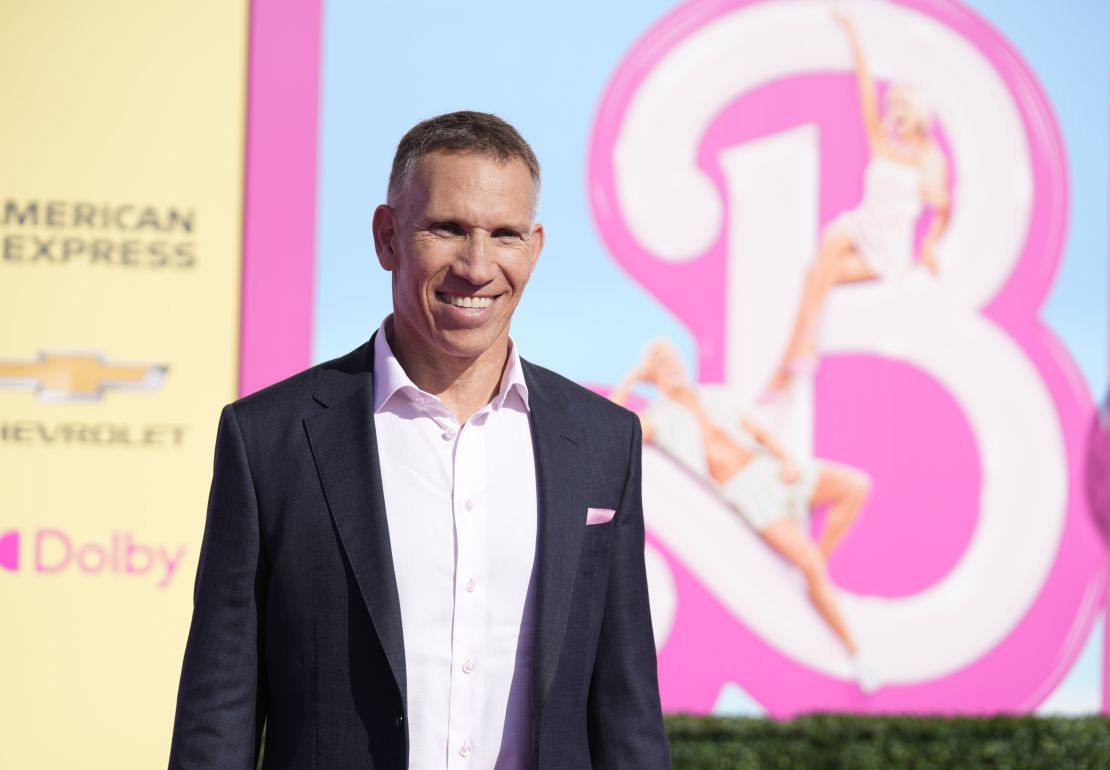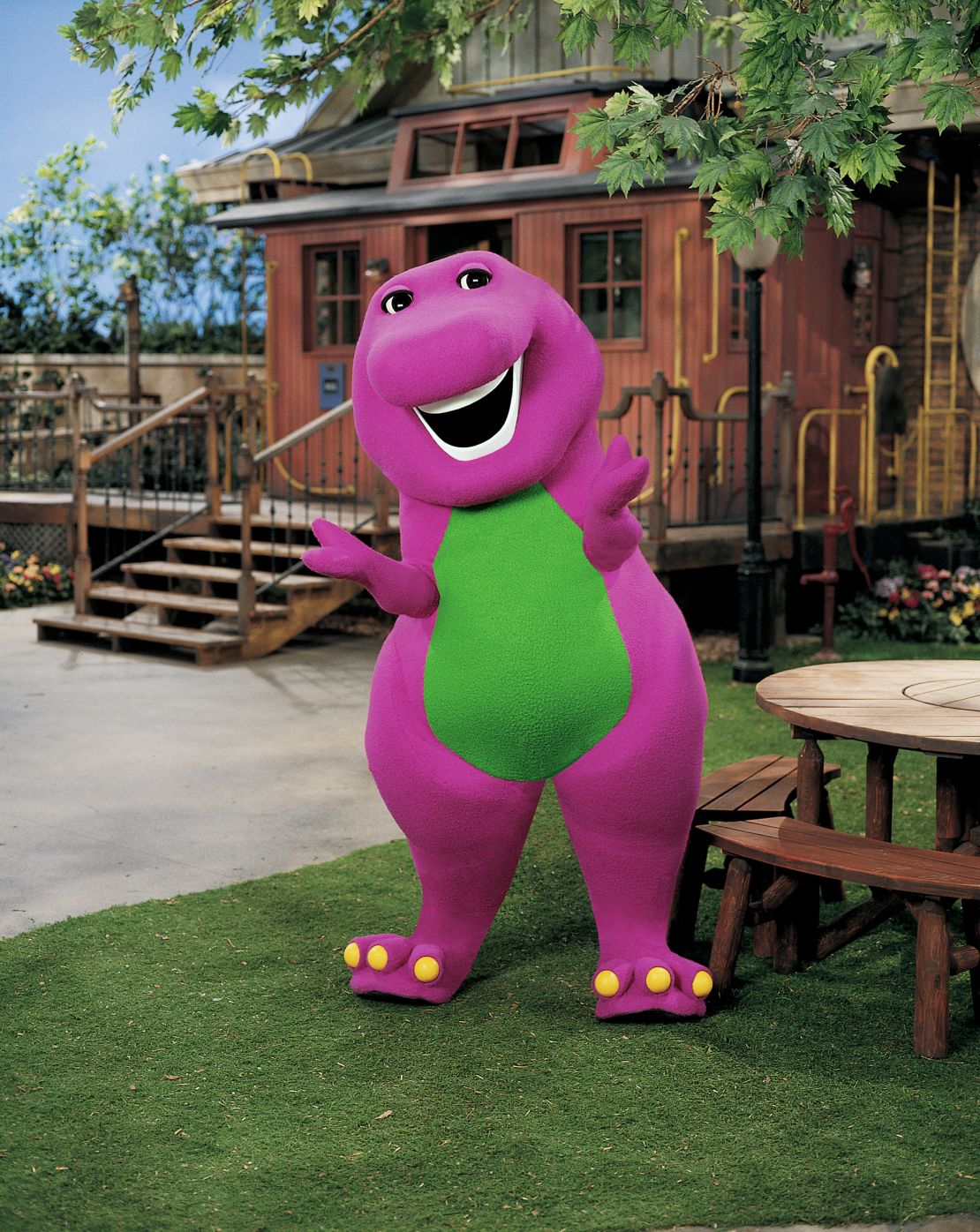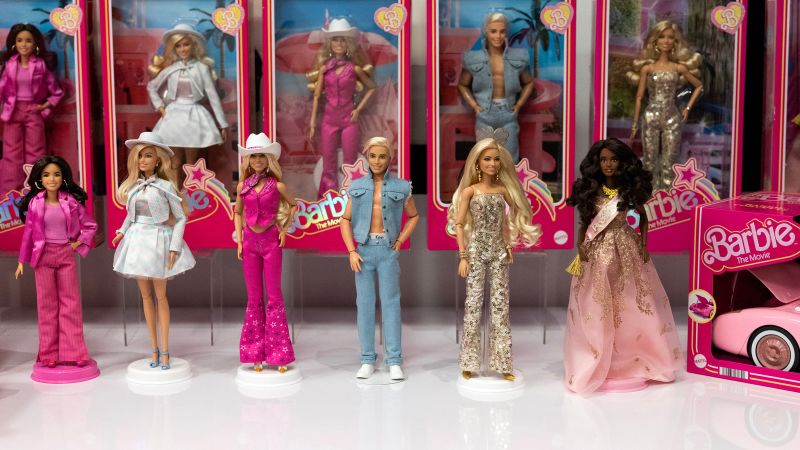Barbie has had quite the year. As she celebrates her 65th birthday this week, the newly minted movie star has inspired a worldwide cultural movement and will make her grand debut at the Academy Awards this upcoming weekend with eight nominations.
“Barbie” – the movie – was a smash success, hauling in over $1.4 billion globally to become the biggest movie of 2023. But that was just Mattel’s first entry into Hollywood, as the storied toy company looks to turn its large portfolio of brands, including Hot Wheels, Fisher Price and American Girls, into content and experiences beyond the mere physical toys.
The “Barbie” movie (from Warner Bros. Pictures, which shares the same parent company as CNN) ignited a hot pink explosion that has greatly expanded the doll’s brand around the world. But Mattel’s effort to strike gold again comes at a difficult time for franchises in Hollywood. Once-guaranteed franchises like Disney’s Marvel cinematic universe are underperforming at the box office and properties based on toys, like Hasbro’s “Transformers” films, are not raking in the billion-dollar ticket sales they once were.
Mattel has 13 series on television and across streaming and is currently developing more than a dozen films, including “Hot Wheels” from J.J. Abrams; “Rock ‘Em Sock ‘Em” with star Vin Diesel; “Polly Pocket” from Lena Dunham, starring Lily Collins; “Barney,” which will be produced by Daniel Kaluuya; an animated “Bob the Builder” movie from executive producer Jennifer Lopez and Anthony Ramos; and “Major Matt Mason,” which will star Tom Hanks as the astronaut action figure. Films based on the Magic 8 Ball and the UNO card game are also in the works.
“We think of people who buy our product not just as consumers, but as fans that have an emotional relationship with our brands,” Mattel CEO Ynon Kreiz tells CNN.
“This is very much about transforming Mattel from being a toy manufacturing company that was making items to an intellectual property company that is managing franchises,” Kreiz adds.
Kreiz joined Mattel in 2018, after four consecutive years of slumping sales. Since the former studio executive, who served as CEO of Fox Kids Europe and Endemol, has taken the reins, the company has stabilized, finishing 2023 with $5.44 billion in revenue, reflecting a slight increase year-over-year and beating its competitor Hasbro. With toy sales down industry-wide as Americans grapple with high prices and TikTok-viewing kids change their tastes, Kreiz is guiding Mattel to find new revenue streams that include movies, TV shows, digital gaming, a nationwide Barbie touring experience and even a Mattel theme park that will open later this year in Arizona.
Mattel’s CEO hinted that the company envisions a day in which it could make more money off of movies than toys.
“We have a very unique opportunity to expand outside of the toy aisle into business verticals that in some cases, are bigger than the toy industry,” Kreiz says.
Ever since Greta Gerwig and Margot Robbie’s “Barbie” was announced, Mattel maintained that it was not making a movie to sell toys. But the fact of the matter is, Barbie sales skyrocketed.
Driven largely by benefits associated with the “Barbie” movie, Mattel finished last year strong with 24% fourth-quarter growth. In 2022, Mattel’s share of the $7.6 billion dolls category was 26%, per Circana. As of November 2023 – months after the film’s release – the company’s share of dolls jumped to 33%.
“We always said that we are focusing on quality experiences not to sell. It was not done to sell toys, but we always knew that if we do a good job and people watch our content, good things will happen and we will also sell a lot of toys,” Kreiz says.
Before the “Barbie” movie was released, the Barbie brand already had a 99% rate of global brand awareness, selling more than 100 dolls every single minute, according to Mattel. For the past two years, Barbie has ranked as the No. 1 doll property and No. 2 toy property in the world, behind only Pokémon, according to Circana. But that brand awareness was not always positive.

Throughout the years, Mattel has faced intense criticism for a lack of diversity in their Barbie dolls. Over the last decade in particular, the company has tried to change that. Today, Barbie has highlighted over 250 careers (through her varying outfits) and in the past nine years has introduced more than 175 looks with new skin tones, eye colors, hair textures, body types and disabilities.
The collection features Barbie dolls with wheelchairs, hearing aids, Down syndrome and inclusive body types that launched in 2016 like curvy, tall and petite.
“Today, Barbie is the most diverse doll line in the world,” says Lisa McKnight, Mattel’s executive vice president and chief brand officer. “What we found 10 years ago was Barbie was not connecting with culture. She was a one-dimensional view of beauty. She was not viewed as a positive role model, so we’ve taken great strides to make her more inspiring.”
Barbie has actually been in the content business for over two decades, launching her first animated movie on VHS in 2001, “Barbie in the Nutcracker.” Across movies and series, Barbie has 45 titles in the kids and family space. But it wasn’t until 2023 that the feature film finally got off the ground.
Prior to Robbie partnering with Mattel to produce the movie through her production company and hand-picking Gerwig to direct, many attempts were made at a “Barbie” movie – first in 2009 when Universal developed the property, and then in 2014 when Sony came in to adapt a Barbie movie, originally starring Amy Schumer and then Anne Hathaway.
Apparently, it was worth the wait. Following the movie’s release, Barbie is now a three-time Grammy winner (thanks to the soundtrack) and has nabbed more than 450 industry nominations,including best picture at the Oscars. Mattel received a $150 million revenue boost from the film, including direct movie participation, movie-related toy sales and consumer products, stemming from 165 brand partnerships that had everything from Crocs to Cold Stone ice cream sundaes painted pink. Ever since the first on-set paparazzi photos of Robbie emerged in mid-2022 , searches for pink clothing jumped 416%, with #Barbiecore becoming the most viral fashion trend of 2023.
“We reignited this fanbase with people of all generations,” McKnight says.
Mattel Films, which is headed by Oscar-nominated producer Robbie Brenner, faces a lot of pressure to live up to “Barbie” with its second go-around.
“It’s obvious that not every movie will be another ‘Barbie’ movie, but that’s okay,” Kreiz says.
In an age of reboots, spinoffs and sequels, nostalgia sells. But there is plenty of criticism surrounding the lack of original ideas in Hollywood.
Kreiz says that just because Mattel’s movies will be based on IP doesn’t mean they’re not new ideas. The executive says that partnering with the best creative talent ensures original storytelling, highlighting the “genius” of Gerwig, Robbie and Mark Ronson, who produced “Barbie’s” soundtrack. That’s why Mattel does not have an overall deal with any particular studio or streaming service; the company wants flexibility.
On the topic of originality, one of the buzziest films on Mattel’s development slate is a film based on Barney, the purple dinosaur. Very few details have been unveiled, other than its producer, Oscar-winning actor Daniel Kaluuya, and being described as “surrealistic.”

“We haven’t announced the details of that project, but it’s going to be very original and very exciting,” Kreiz says.
When asked about the possibility of an R-rated film at Mattel, Kreiz says, “I wouldn’t rule out different scenarios. But as a company, we’re heading towards family entertainment, so I would expect movies for the most part, if not all cases, to be PG 13.”
Mattel is hoping to find lucrative, family-friendly film franchises among their portfolio, but a “Barbie” sequel is not in development – yet.
“It’s too early to talk about another movie related to ‘Barbie,’” he says. Mattel is hoping to reach a stage where the film division is rolling out “between one and two movies a year,” the CEO says.
“It’s easy to look at the big brands and expect something big to happen there,” Kreiz says. “But what we’ve seen before is that success can come from a small brand that connects with the audience and becomes a huge hit in a multibillion-dollar franchise.”
Read the full article here
